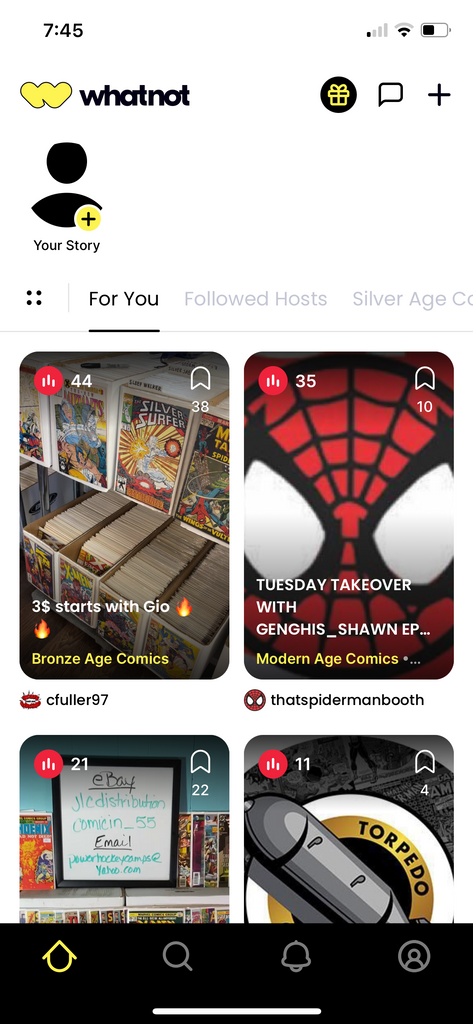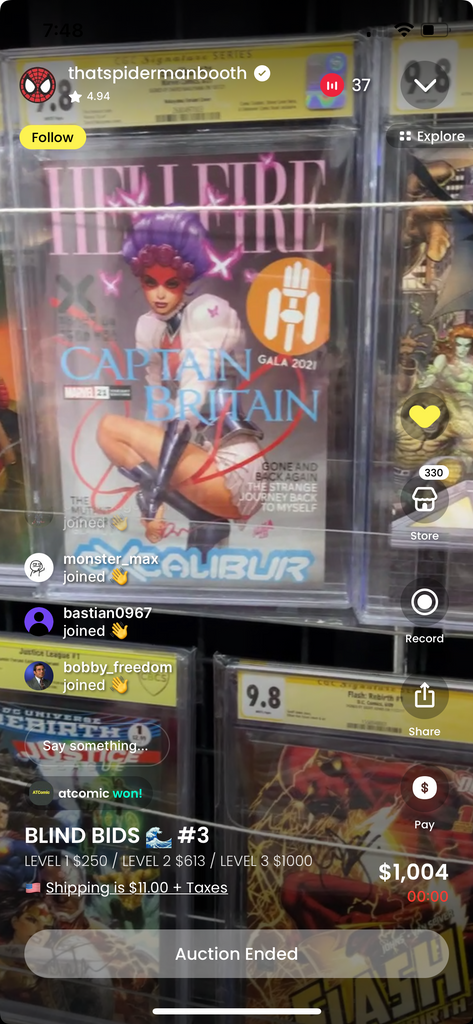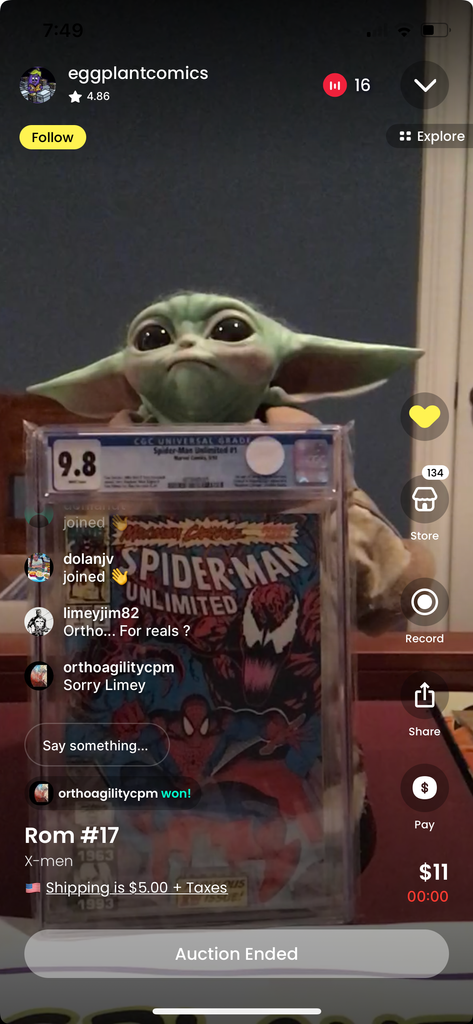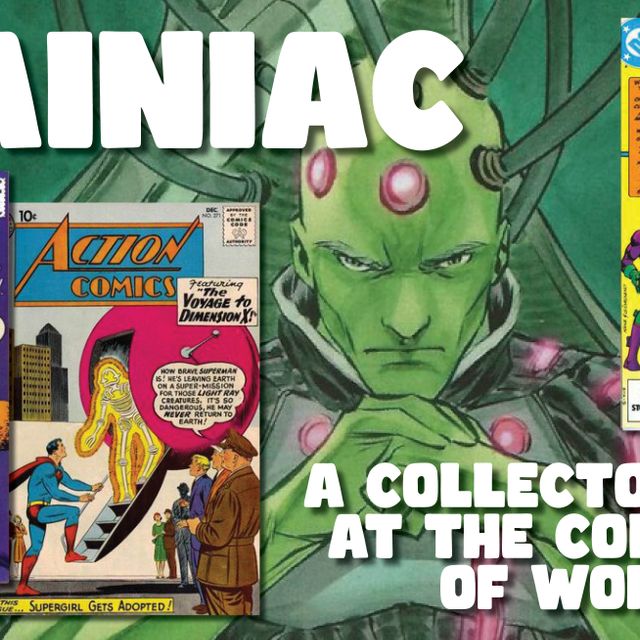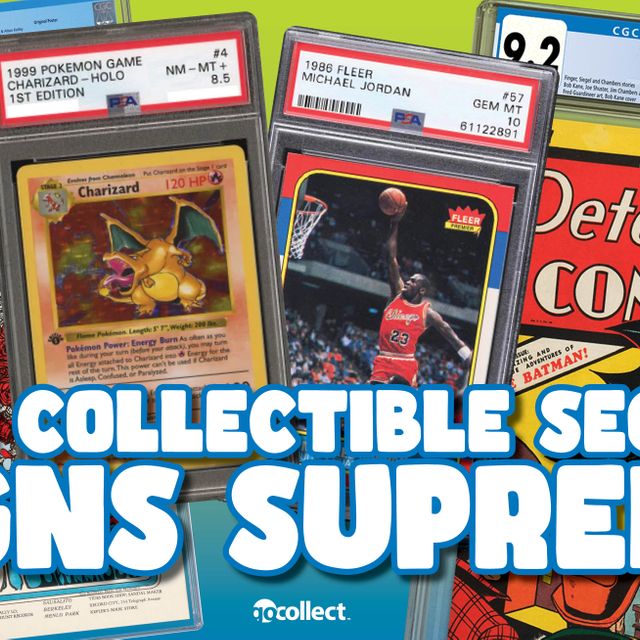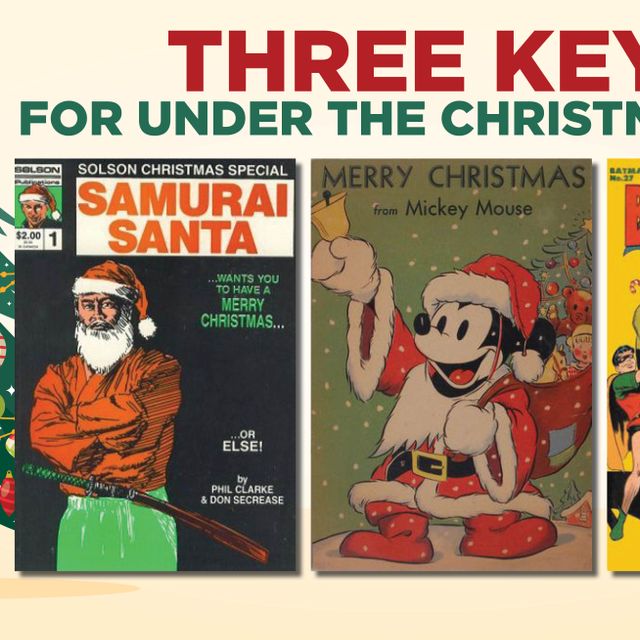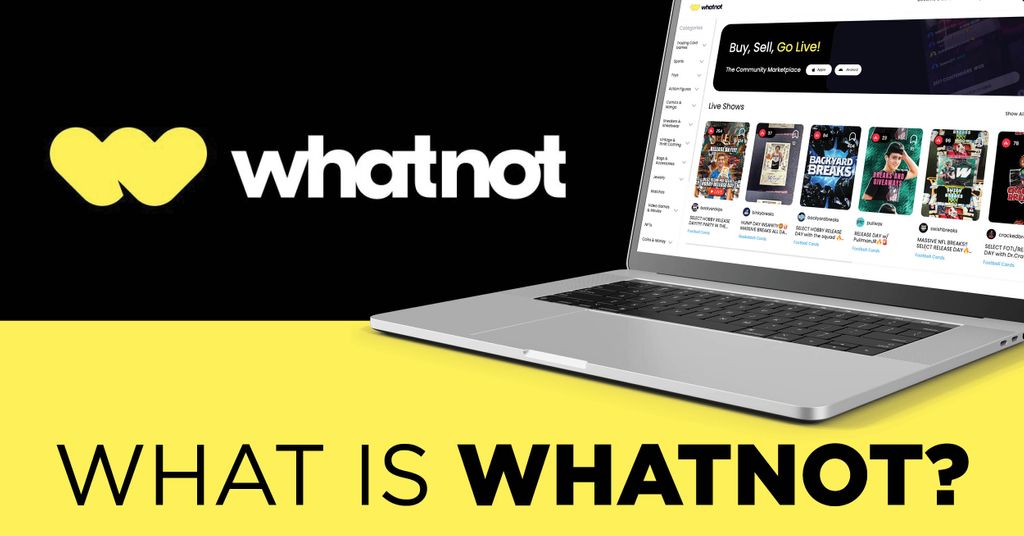
A Short History of Whatnot
Los Angeles-based startup Whatnot is an e-commerce company founded by Logan Head in December 2019. Whatnot started out as a fairly standard resale app focused entirely on Funko Pop figures. Once COVID hit, however, they saw an opportunity in live sales and soon expanded into trading cards. Comic books were next. To date, Whatnot has secured nearly $485 million in funding and is valued at $1.5 billion.
From its beginnings in a Los Angeles garage, Whatnot now employs over 300 people and has expanded into multiple resale categories, including sneakers & streetwear, jewelry, video games & movies, NFT, coins & money, and many more. As part of its expansion, Whatnot acquired startup Pastel Labs in February, primarily as a means of hiring founder Jeff Chang, former growth technical lead at Pinterest, to head up their growth team. They also hired Lyft’s former head of growth and product engineering, Ludo Antonov, to head up their engineering team.
How to Use Whatnot
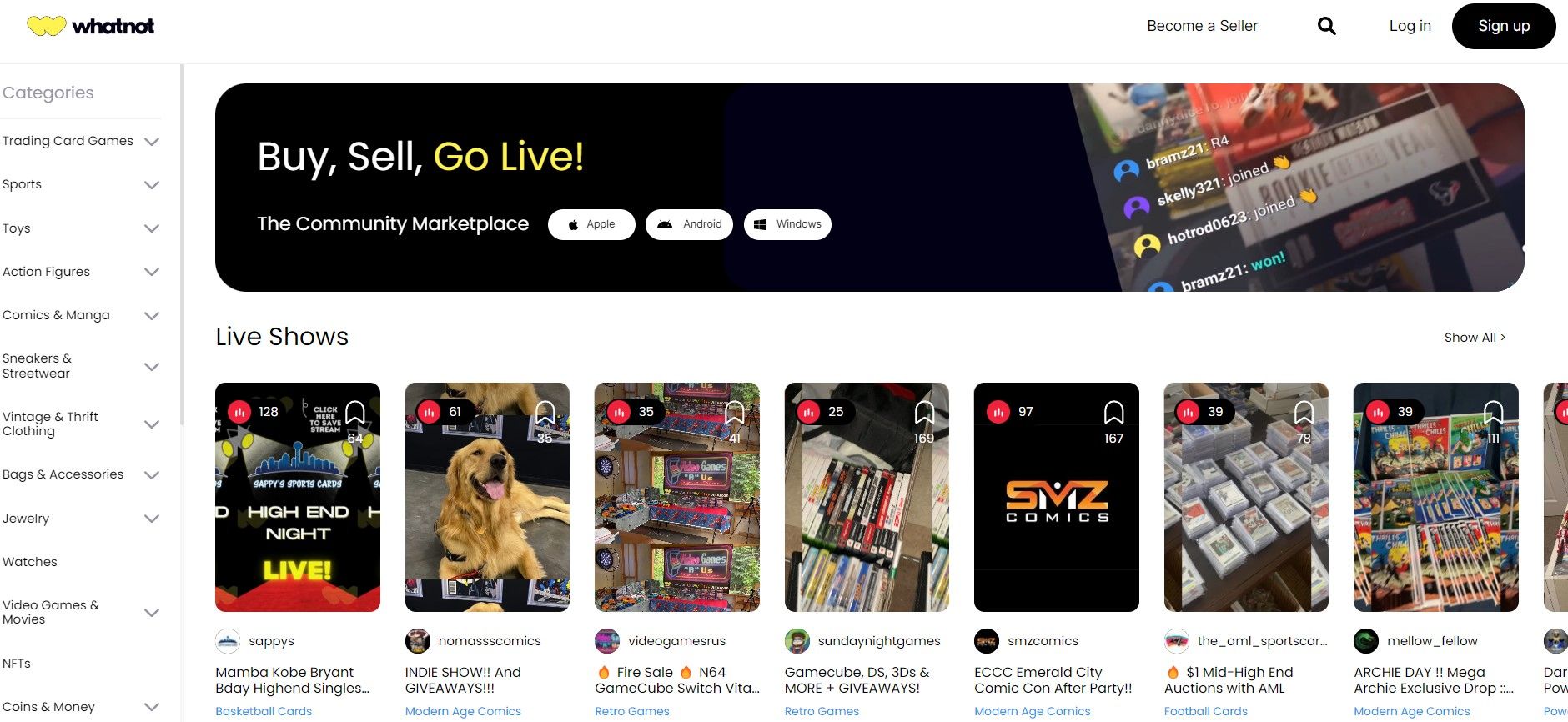
You have to agree to the guidelines to be able to use the app.
Once in the app, you’ll need to enter payment information if you want to purchase anything. You can select from a number of different collectible categories. Once you’ve selected a category, you enter into a storefront that includes a number of live sales that you can bounce between.
Overall, I found it to be fairly simple to get on the platform as a buyer. The store interface is pretty intuitive, so it shouldn’t be a problem for most people to use.
Payments are simple once you’ve entered in your payment information, although there were a couple live sales that required you to scan a government-issued ID to be able to purchase, which what?! I should never have to do that! If I go into my local comic shop to purchase a comic book, no one makes me flash my driver’s license to purchase. I suppose if I looked more youthful, they might ask for ID if I was purchasing an adult comic. If this has to do with the potential for purchasing an adult product, Whatnot needs to find a better way to go about this than leaving it up to sellers to require this prior to purchasing anything in their store.
Whatnot for Sellers
Whatnot has a number of sellers, from well-known influential YouTubers to virtual unknowns. Like most apps or sites that offer opportunities for resellers to sell their products, Whatnot charges fees to sellers. There is an 8% fee that the seller pays to Whatnot for each sale, as well as payment processing fees of 2.9% + 30 cents. So, if you sell a comic for $10, you will receive $8.61. If you’re able to get on Whatnot as a seller, you should be able to move comics regularly if you know what you’re doing.
However, there is a waitlist to become a seller on Whatnot. At present, it can be many months before you’re approved. There are also barriers to entry for sellers, including 1) You have to prove your inventory, 2) You have to prove that you have a social media following, and 3) You have to prove you have a history of selling. All of the above need to be completed before you’re even approved for the waiting list.
Whatnot for Buyers

Avengers #196, graded 9.6 – sold for $189, FMV $375
Tales of the Teen Titans #44, graded 9.4 – sold for $96, FMV $180
X-Men #36, graded 5.5 – sold for $95, FMV $130
So, clearly, there are deals there.
However, and very important for GoCollect readers, there are not many slabs offered for sale on Whatnot outside of modern comics. 90% of the sales I witnessed were raw comics. There were many good deals to be found for raw comics. If you’re looking for raw books that you could eventually send in for grading, you’ll certainly pay a lower price than you would on eBay, for example, in many instances.
The other issue you’ll face as a buyer on Whatnot is the quality of the live sales. There are a lot of sellers more focused on trying to put on a good show than actually selling product. Unfortunately, lacking any live event training or background in video production, these “shows” are, for the most part, not very good. Most have tinny music playing in the background and hosts who spend far too much time talking – more often than not to themselves – and not enough time actually selling comics.
Now, to be fair, that could be me. But if I click on your show, and every time I’m there you’re playing Plinko for reasons that elude me, and not selling comics, I’m very apt to never tune in again. I tried that particular live sale four times before completely giving up.
There are also sellers who don’t know much about comics. They’re up there selling comic books, but they bring things up that betray their ignorance of the hobby and the product they’re selling. Knowledgeable collectors will flee from sellers like this. The problem is with newer collectors who could be taken advantage of, as the more ignorant sellers are more apt to tout a comic as key when, in fact, it couldn’t be farther from the truth.
Also, and I’m not sure if it’s a problem with the app itself or the sellers, but if I click on Silver Age Comics and go into a show and there are no Silver Age comics there, I’m going to be annoyed. If I continue into other shows and they’re filled with Copper Age with a smattering of Bronze Age, despite the fact that I’m in the Silver Age section? Well, I’m likely going to be filled with doubt that you actually have what I’m looking for.
Having different sections of a store is a good thing. But if I go into the grocery store and head down the bread aisle and there’s nothing but juice and soda, I’ll likely stop shopping there.
I wish that I could say that there were more good sellers than bad on Whatnot. The good sellers I found were very good – knowledgeable of the comics they were selling, willing to take them out of bags to show flaws, and understanding of the fair market value.
As an excellent example, one store was selling all Avengers comics. The seller knew all the comics, showed highlights of the front and back covers, as well as the interiors, and moved through the issues at a decent pace. Most importantly, he kept the conversation to the comics he was offering.
Unfortunately, I found the bad-to-good seller ratio to be roughly 2 to 1. In a storefront that is still fairly small, that can be glaring. I would give yourself time to find the good sellers before purchasing any product.
Whatnot Final Analysis
Whatnot has the potential to be a very good app for buying and selling comic books. I found the app easy to use and quite intuitive. I loved the ability to bounce between live sales and witnessed some great deals. There was a wide variety of comics from different ages available, although Golden Age books were conspicuously lacking.
Ultimately, what Whatnot needs to truly thrive are product specialists. Like many tech startups, they’re focused primarily on the technical aspects of the app and making it as good as it can possibly be. In that aspect, they’ve succeeded. However, they need to bring people on with knowledge of the comic book market to oversee the sellers.
Product specialists could offer advice to sellers on ways to make their shows better, focusing more on selling and not on things that they find amusing or entertaining. I found too many sellers trying to be YouTubers. This should be a place where I don’t have to sit through Plinko to get to comics I would like to buy. They could also ensure that live shows are placed in the correct sections of the store.
I worry that, being overly focused on the tech, Whatnot has placed barriers for entry to sellers that are easy for neophytes (or even worse, algorithms) to prove or disprove. They could potentially weed out really good comic book sellers in favor of those who are active on social media.
If they’re going to place barriers for entry, they should make sellers send in audition videos instead of providing social media bona fides and have product specialists separate the wheat from the chaff. If Whatnot isn’t able to solve these problems, there are plenty of up-and-coming competitors waiting in the wings, including Popshop and others, as well as big players like YouTube and Amazon who are testing live selling.
One final note and word of caution: YouTubers have been increasingly touting Whatnot. Many of those same YouTubers are sellers on Whatnot and have the most-followed stores. The ability of YouTube influencers to affect the comic market is already potentially somewhat problematic. Especially considering that some of them are active in comic book sales. Add in their touting of an app where they sell and are the most followed sellers could – and mind you, I’m saying could – potentially lead to a degree of market manipulation that is ultimately not good for the hobby.
Want more Selling 101 coverage?
-
COLLECTING 101: FACEBOOK AUCTIONS
-
COLLECTING 101: KNOW YOUR GRADES
-
INFLATION’S IMPACT ON COMIC COLLECTING AND INVESTING
Are you buying or selling on Whatnot? What do you think of the app? Let us know below.


